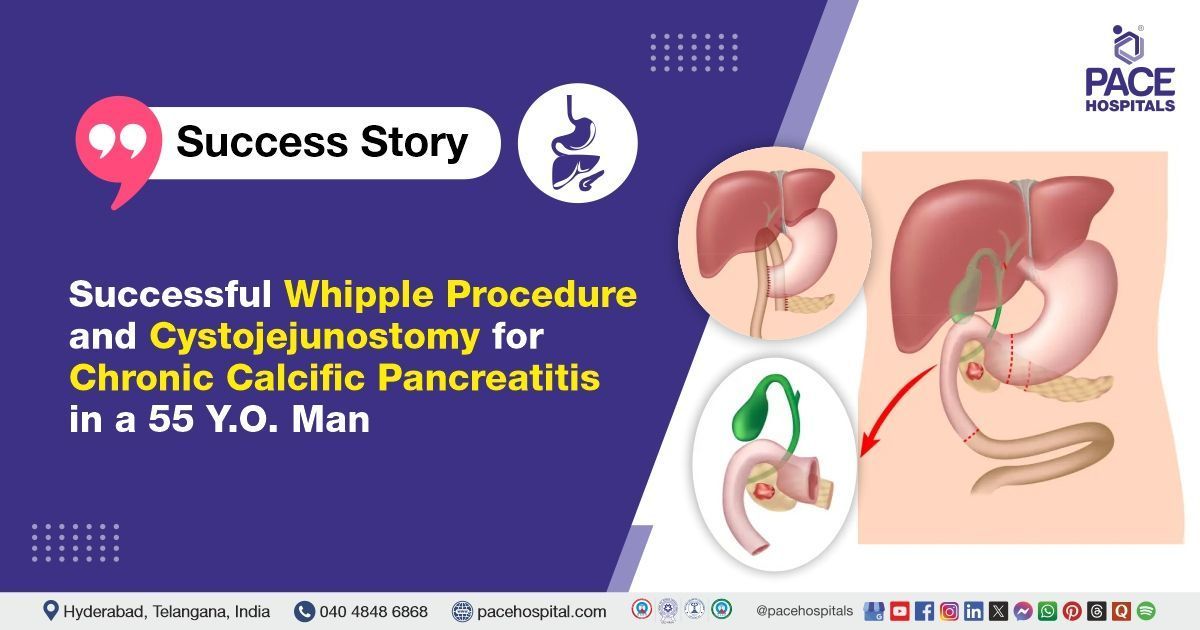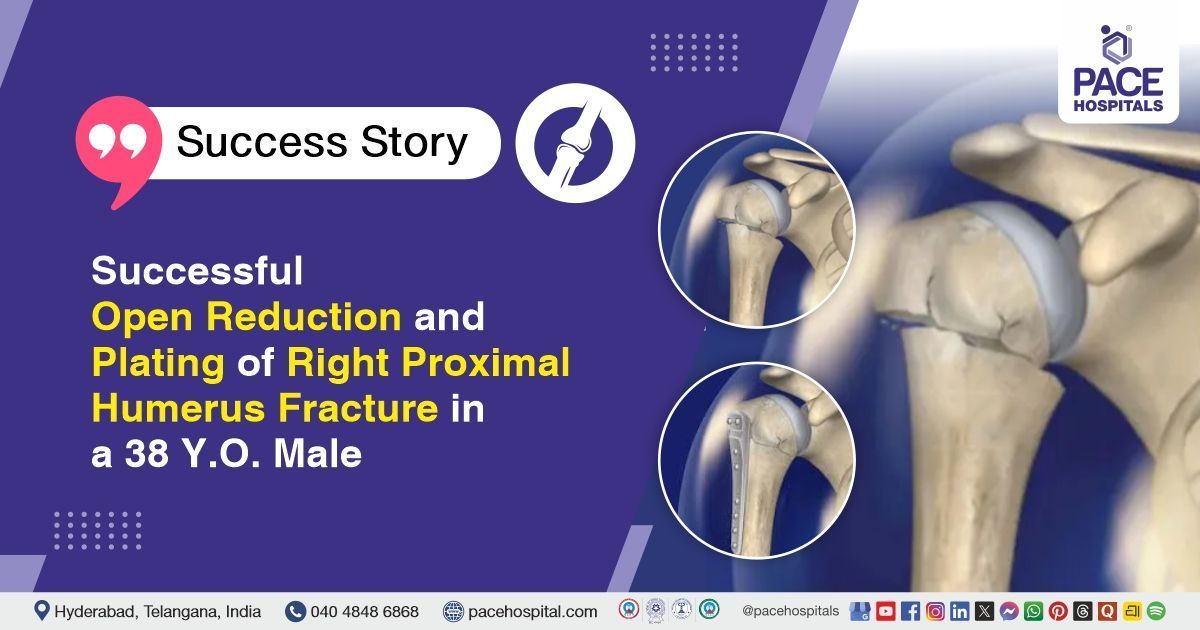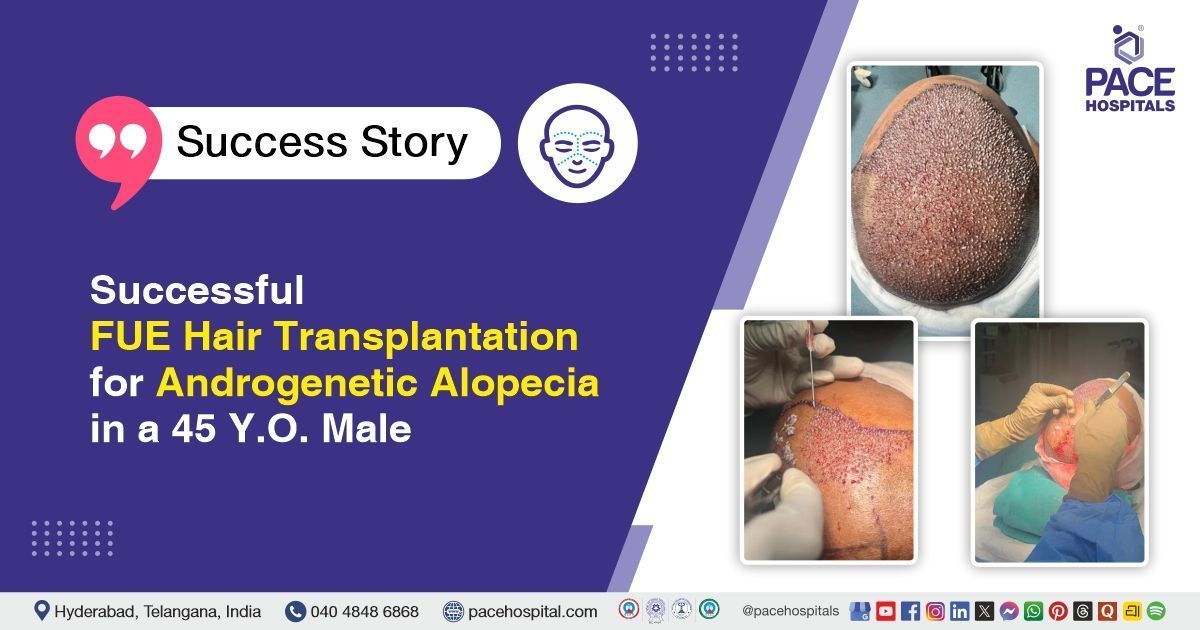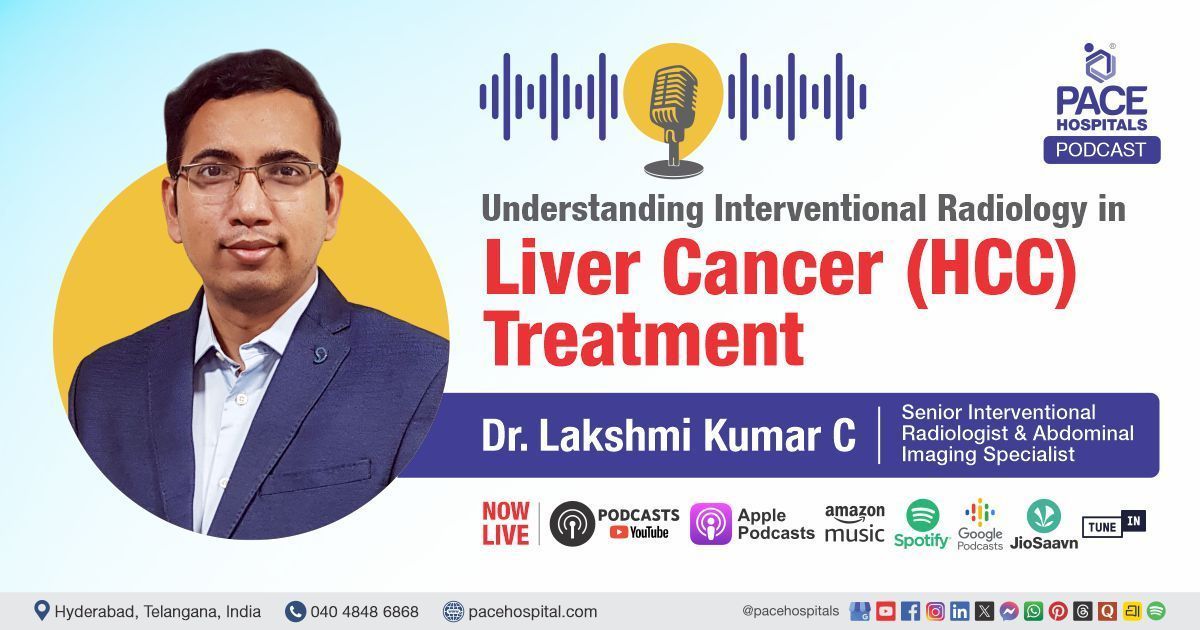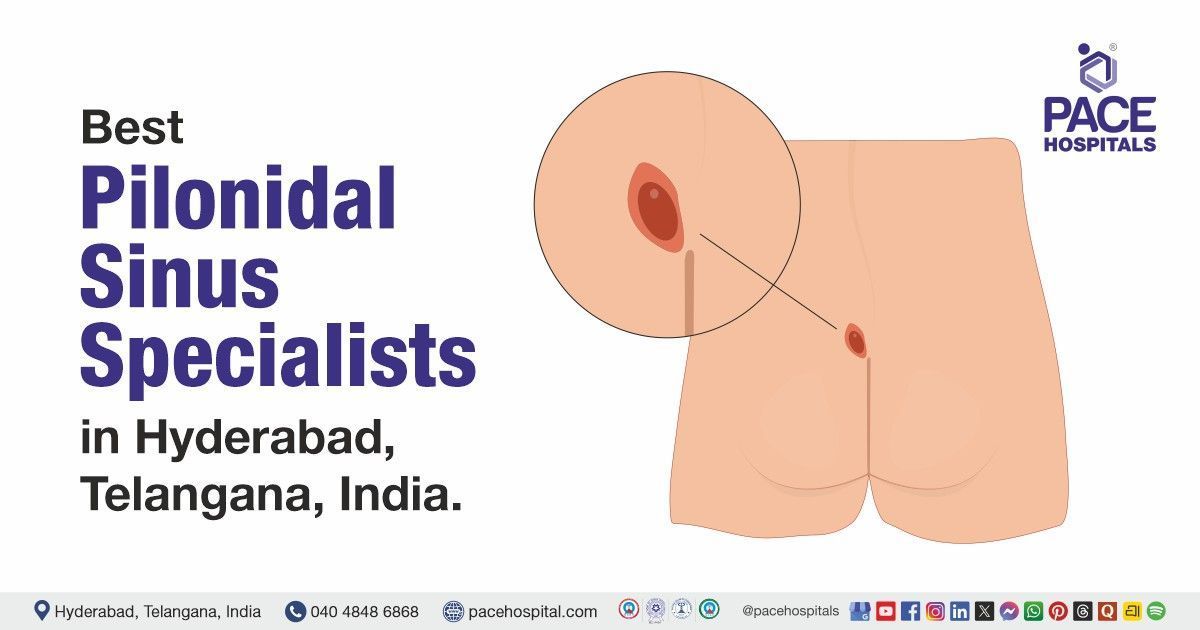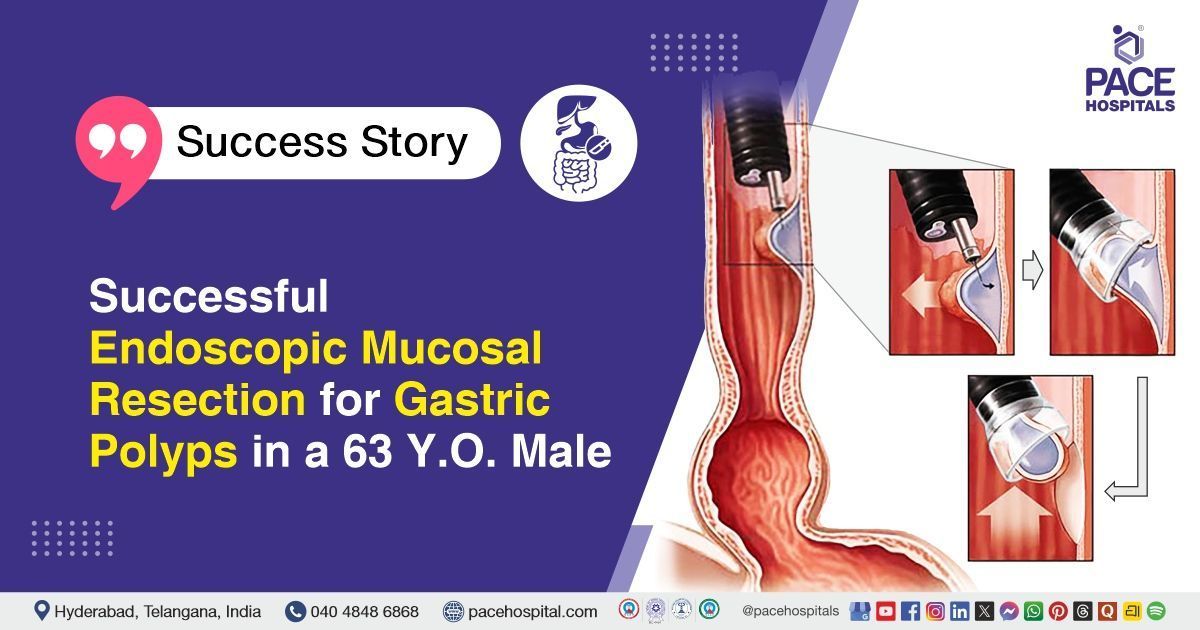Successful Whipple Procedure & Cystojejunostomy for Chronic Calcific Pancreatitis in a 55-Year-Old Man
PACE Hospitals
PACE Hospitals' expert surgical gastroenterology team successfully performed a Whipple’s procedure (pancreaticoduodenectomy) and Cystojejunostomy on a 55-year-old male diagnosed with chronic calcific pancreatitis, a suspicious mass in the head of the pancreas indicative of a possible neoplastic process, and a pseudocyst in the tail of the pancreas. The surgery aimed to relieve abdominal pain, manage complications from chronic inflammation, and address the suspected lesion as well as the pseudocyst. This intervention supports smooth recovery and improves the patient’s quality of life.
Chief Complaints
A 55-year-old male patient with a
body mass index (BMI) of 23 presented to the Surgical Gastroenterology Department at
PACE Hospitals, Hitech City, Hyderabad, with a chief complaint of abdominal pain persisting for the past six months. He was initially asymptomatic, but gradually developed pain in the epigastric region, which radiated to the back. The pain increased in frequency and severity over time, becoming particularly intense during the last three months.
Past Medical History
The patient has a history of
hypertension and
diabetes and was on regular medication. He had experienced similar episodes in the past, which were managed with medication and rest. There was no history of
jaundice, fever, melena, hematemesis, weight loss, or loss of appetite.
On Examination
Upon admission, the patient was conscious, oriented, and in fair general condition. Vital signs were stable. Abdominal examination revealed mild tenderness in the epigastric region without any palpable mass or organ enlargement. The abdomen was soft and non-distended, with normal bowel sounds present. There was no peripheral lymphadenopathy. Cardiovascular, respiratory, and neurological examinations were unremarkable.
Diagnosis
After admission to PACE Hospitals, the patient underwent a comprehensive clinical evaluation, along with a detailed review of his prior medical records and diagnostic reports by the surgical Gastroenterology team.
A CT scan of the abdomen performed in the past showed a 6 x 5 cm solid-cystic mass in the head of the pancreas with areas of calcification, possibly a pancreatic pseudocyst or an intraductal papillary mucinous neoplasm (IPMN). A past MRCP scan revealed that the main pancreatic duct was irregularly dilated (7.6 mm) with branch duct changes, indicating chronic pancreatitis. An endoscopic ultrasound (EUS) done previously demonstrated signs of acute pancreatitis with walled-off necrosis and a cystic lesion in the head of the pancreas that appeared to be connected to the pancreatic duct, suggesting either an IPMN or a mucinous cystic neoplasm (MCN).
Based on these findings and the confirmed diagnosis of
chronic calcific pancreatitis with a pancreatic head mass suspicious for neoplasm, the patient was advised to undergo
chronic calcific pancreatitis Treatment in Hyderabad, India, under the expert care of the surgical Gastroenterology Department.
Medical Decision Making (MDM)
After consultation with Dr. Madhusudhan, a surgical gastroenterologist, and cross-consultation with Dr. Lakshmi Kumar CH, Dr. Tripti Sharma, a comprehensive evaluation was carried out to determine the most appropriate diagnostic and therapeutic approach for the patient. Based on their expert assessment, it was concluded that Whipple’s Pancreaticoduodenectomy combined with cystojejunostomy would be the most effective procedure to address the patient’s condition.
The patient and his family were thoroughly counselled regarding the severity of the condition, the details of the surgical procedure, potential risks, and the necessity of the procedure to restore function and promote optimal recovery.
Surgical Procedure
Following the decision, the patient was scheduled to undergo Whipple procedure (Pancreaticoduodenectomy) and cysto-jejunostomy in Hyderabad at PACE Hospitals under the expert supervision of the surgical gastroenterology department.
Before the surgery, informed consent was obtained after a thorough explanation of the procedure and associated risks, ensuring the patient and his family understood the surgical process. The procedure was performed in the following steps:
- Whipple’s Resection (Pancreaticoduodenectomy): The head of the pancreas, duodenum, distal bile duct, gallbladder, and distal stomach were resected en bloc. The Whipple specimen was removed and sent for histopathological examination.
- Pancreaticojejunostomy (PJ): The main pancreatic duct (MPD) was identified and laid open along half the length of the pancreatic remnant. Multiple intraductal calculi were removed. A side-to-side pancreaticojejunostomy was constructed using 3-0 Prolene sutures, ensuring duct-to-mucosa approximation for secure drainage.
- Hepaticojejunostomy (HJ): Approximately 10 cm distal to the pancreaticojejunostomy, a hepaticojejunostomy was performed to restore biliary continuity. The anastomosis was fashioned using 5-0 PDS sutures, with the posterior layer sutured continuously, and the anterior layer sutured intermittently.
- Cystojejunostomy: It was constructed approximately 10 cm distal to the hepaticojejunostomy to drain the large pseudocyst in the tail of the pancreas internally into the jejunum.
- Gastrojejunostomy (GJ): It was created approximately 30 cm distal to the Cystojejunostomy to allow gastric outflow, ensuring bypass of the resected duodenum.
- Jejunojejunostomy: A side-to-side jejunojejunostomy was performed approximately 20 cm distal to the gastrojejunostomy between the afferent and efferent jejunal loops to maintain physiological flow and reduce the risk of reflux.
Intraoperative Findings
- A mass measuring approximately 3 x 4 cm was noted in the head of the pancreas.
- Dense inflammatory adhesions were observed between the pancreas, the posterior wall of the stomach, and the tail of the pancreas.
- A large cyst measuring approximately 20 x 15 cm was identified in the lesser sac, likely arising from the tail of the pancreas.
- On aspiration, the cyst contained clear fluid, consistent with a pseudocyst.
- The pancreatic consistency was firm, and the main pancreatic duct (MPD) was dilated to approximately 8 mm.
- Multiple intraductal calculi were noted in the body of the pancreas.
- A replaced right hepatic artery originating from the superior mesenteric artery (SMA) was identified.
- Hepatoduodenal ligament (HDL) dissection was carried out, and the supraduodenal portal vein was looped.
- The mass in the pancreatic head was found to be densely adherent to the portal vein (PV) and superior mesenteric vein (SMV), requiring meticulous dissection.
Postoperative Care
The procedure was uneventful, and postoperative recovery was satisfactory. He was started on nasojejunal (NJ) feeds on postoperative day (POD) 2, which was gradually advanced to an oral diet by POD 4. On POD 3, he developed a Grade A pancreatic leak. His antihypertensive medications were resumed. During his hospital stay, he was managed with intravenous fluids, intravenous antibiotics, deep vein thrombosis (DVT) prophylaxis, and other supportive treatments. The patient was discharged in a hemodynamically stable condition with a right-sided abdominal drain in situ, along with appropriate postoperative care instructions.
Discharge Medication
Upon discharge, the patient was prescribed oral antibiotics, a proton pump inhibitor, analgesics, and a multivitamin supplement. Pancreatic enzyme replacement therapy was prescribed to be taken and continued long-term. He was also instructed to continue his antidiabetic combination therapy and antihypertensive medications, including a beta-blocker and a calcium channel blocker.
Advice on Discharge
The patient was advised to adhere to a low-salt diabetic diet to manage his diabetes effectively and was given detailed instructions on wound care and drain site management to promote healing and prevent complications after surgery.
Emergency Care
The patient was informed to contact the emergency ward at PACE Hospitals in case of any emergency or development of symptoms like fever, abdominal pain, or vomiting.
Review and Follow-up
The patient was advised to return for a follow-up visit with the Surgical gastroenterologist in Hyderabad at PACE Hospitals after one week. He was instructed to bring reports of complete blood picture (CBP), renal function tests (RFT), liver function tests (LFT), C-reactive protein (CRP), and histopathological examination (HPE). The follow-up visit would include a comprehensive evaluation, wound assessment, and monitoring of his postoperative recovery.
Conclusion
This case highlights the effective surgical treatment of chronic calcific pancreatitis with a suspected pancreatic head mass and pseudocyst. The Whipple procedure with cysto-jejunostomy successfully managed the condition and relieved symptoms. Careful postoperative management supported a smooth recovery and enhanced the patient’s overall quality of life.
The Importance of Multidisciplinary Surgical Approach in Complex Pancreatic Conditions
This case highlights the importance of a multidisciplinary surgical approach in managing complex pancreatic conditions like chronic calcific pancreatitis with suspected neoplastic lesions. The use of advanced procedures such as the Whipple’s operation combined with cysto-jejunostomy allows for effective treatment of both inflammation and potential malignancy in one surgery. Early diagnosis and precise intervention help relieve symptoms and prevent disease progression. Personalized postoperative care and close monitoring are essential to manage complications and support recovery. This approach emphasizes the significance of specialized care provided by a surgical gastroenterologist / surgical gastroenterology doctor in treating complex gastrointestinal conditions.
Share on
Request an appointment
Fill in the appointment form or call us instantly to book a confirmed appointment with our super specialist at 04048486868

